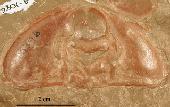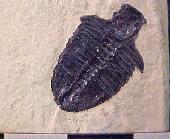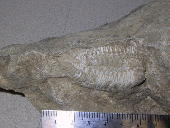|
 See More Images See More Images

Olenellus fremonti
© 2004 UCMP

Bathyuriscus
© 2003 Roland Gangloff, University of Alaska Museum

Coronura aspectens (Conrad)
© 2005 Falls of the Ohio State Park
|
What are Invertebrates? Invertebrates are multicellular animals without backbones. This very large group makes up 95% of living animal species, including such familiar organisms as insects, crabs, clams, and earthworms, as well as less familiar trilobites, brachiopods, and crinoids. Invertebrates dominate habitats as diverse as the deep sea, tide pools, coral reefs, rocks on stream bottoms, and soils. Although some invertebrates fossilize better than others, this group has a long fossil record, extending back to the Precambrian. First known fossil occurrence: Precambrian. Last known fossil occurrence: Quaternary. This group has living relatives. |
Fossils through time:
Choose a time period to see what life was like:
|
|